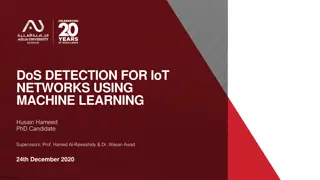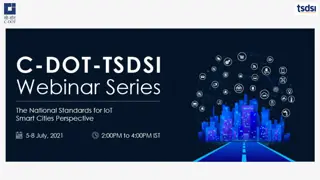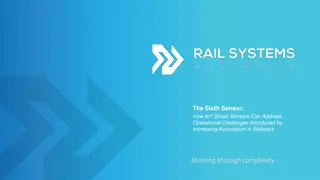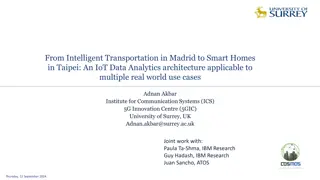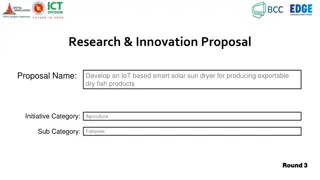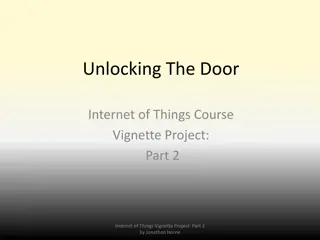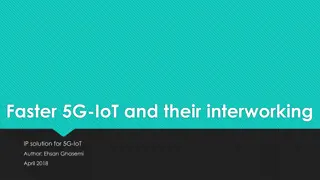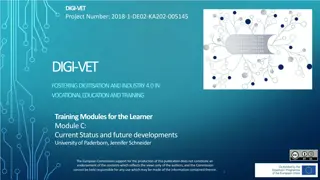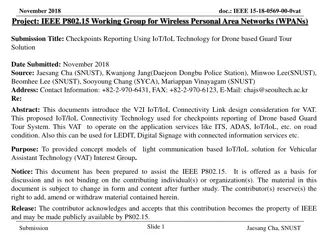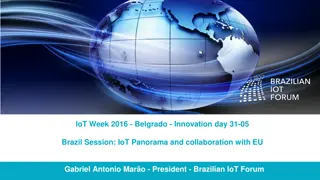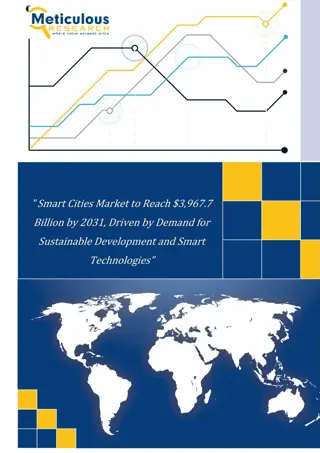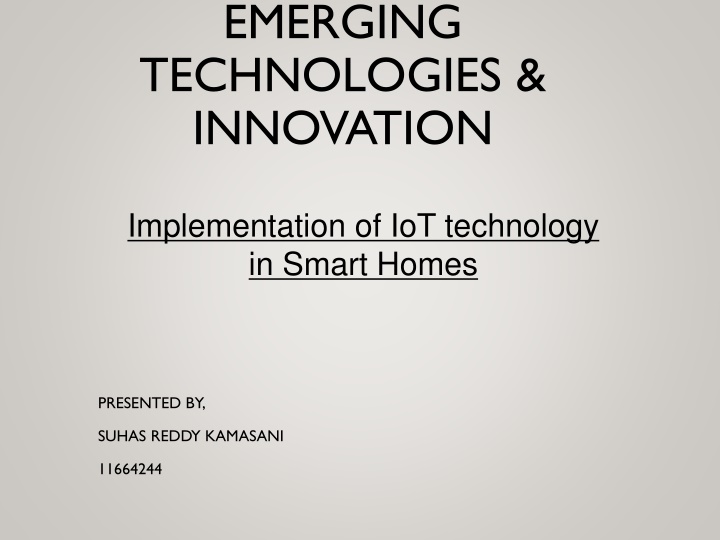
Implementation of IoT Technology in Smart Homes
This research focuses on the impact of IoT technology in smart homes, exploring its benefits for home owners and the inter-connectivity of smart devices. It covers a theoretical framework for implementing IoT structures, along with task plans and procedures. The study also includes a literature review of research papers examining customer behavior and energy efficiency in smart homes.
Download Presentation

Please find below an Image/Link to download the presentation.
The content on the website is provided AS IS for your information and personal use only. It may not be sold, licensed, or shared on other websites without obtaining consent from the author. If you encounter any issues during the download, it is possible that the publisher has removed the file from their server.
You are allowed to download the files provided on this website for personal or commercial use, subject to the condition that they are used lawfully. All files are the property of their respective owners.
The content on the website is provided AS IS for your information and personal use only. It may not be sold, licensed, or shared on other websites without obtaining consent from the author.
E N D
Presentation Transcript
EMERGING TECHNOLOGIES & INNOVATION Implementation of IoT technology in Smart Homes PRESENTED BY, SUHAS REDDY KAMASANI 11664244
INTRODUCTION Topic selection: The topic selected for this research is Implementation of IoT technology in Smart Homes Research domain & justification: The main research domain considered in this research is to analyse its impact on home owners as a huge impact has been found by many users with IoT in different sectors Methodology: Qualitative methodology and literature survey
KEYWORDS FOR THE RESEARCH IoT IoT in smart homes Internet of Things IoT technology
RESEARCH MOTIVATION IoT emerged as a next big thing for smart home to provide a centralized system to control the devices remotely. The main motivation researching IoT smart home was to evaluate all the possible technologies that have capability to inter-connectivity for smart devices. This entire research mainly focuses on the platform, which needs to be used for providing the connectivity of devices to enable the communication between smart homes.
CONTRIBUTION OF THIS PAPER Provide a theoretical research framework for enabling IoT structure to complete the implementation. Elaborate different tasks plans for performing different activities along with procedures for implementing IoT smart home. To explain procedure being followed to implement and proposing a framework.
LITERATURE REVIEW: PAPER 1 In-text Citation: (Yang, Lee & Lee, 2018) Research Objective: To understand and analyse the customers behaviour in terms of adopting smart homes Used Methodology: Qualitative Research Conclusion: The paper concluded that the reliability and interconnectivity are the critical factors terms of providing best approach for automation
LITERATURE REVIEW: PAPER 2 In-text Citation: (Bhat, Bhat & Gokhale, 2017) Research Objective: To explain the ways for controlling the smart home appliances through smart homes by focussing the energy efficiency Used Methodology: Qualitative Research Conclusion: It concluded that security solutions should de deployed to make the smart homes secure and efficient.
RESULTS/FINDINGS The results show the IoT based smart homes has a huge impact on people as shown in the table: Parameters Impact (Medium, Low, High) Security High Management Medium Cost- effectiveness Medium Easiness High
REFLECTION The research helps in different way such as: Helps to learn IoT technology and its uses Helps in enhancing the knowledge of using IoT in smart homes Understand the features and the impact of smart homes on people
REFERNCES 1. Yang, H., Lee, W., & Lee, H. (2018). IoT Smart Home Adoption: The Importance of Proper Level Automation. Journal Of Sensors, 2018, 1-11. doi: 10.1155/2018/6464036 2. Bhat, O., Bhat, S., & Gokhale, P. (2017). Implementation of IoT in Smart Homes. International Journal Of Advanced Research In Computer And Communication Engineering, 6(12). doi: 10.17148/IJARCCE.2017.61229


